#200hp engine
Explore tagged Tumblr posts
Text

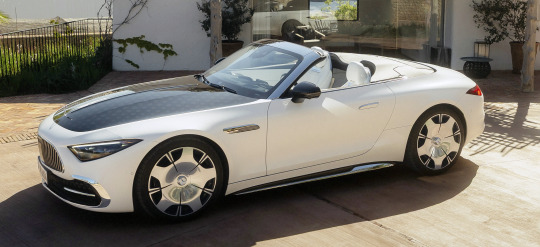


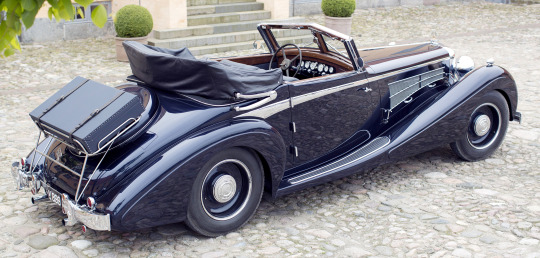

What a difference 92 years makes juxtaposition of Maybach Zeppelin DS8 Cabriolet, 1933, by Wagner & Mercedes-Maybach SL 680 Monogram Series, 2025. Mercedes-Maybach is expanding its product portfolio with a fourth model, described as "the sportiest model in the brand’s history to date." It is a badge-engineered version of the R232 series Mercedes-Benz SL and comes with a 585hp 4.0‑litre biturbo V8 engine with 9G‑TRONIC automatic transmission and 4MATIC+ all-wheel drive. The Zeppelin DS8 came with a 200hp 8.0 litre V12
#Maybach#Mercedes-Maybach#Maybach Zeppelin#Maybach Zeppelin DS8 Cabriolet#Mercedes-Maybach SL#cabriolet#open roof#1933#2025#what a difference#luxury car#personal luxury car
126 notes
·
View notes
Text








1975 3.0CSi: 3.0-liter, six-cylinder, Bosch D-Jetronic fuel injected M30 engine with 200hp (149 kW) @ 6,000 rpm - 271 Nm / 200 ft. lbs. of torque @ 3,700 rpm - 0 to 60 mph (96.5 km/h) in 7.5 seconds with a top speed of 139 mph (224 km/h) - 12,024 units were produced from 1971 to 1975.
117 notes
·
View notes
Text









Today, we're gonna continue on cars that shook the industry, broke all the rules of conventional racing, shocked everyone, even got a fearsome name itself and beat everyone it raced against and that's the "beast from Japan" aka Godzilla itself, the GTR but before we can begin, we'll have to talk about how the car came about since the very start and even discuss some of the missing "GTRs" that skipped the lines.
Pics from left to right, top to bottom in a zigzag pattern: PGC10 Skyline GTR -> KPGC10 -> KPGC110 "Kenmari" -> R30 RS -> Slight modified R31 RS -> BNR32 -> BNR33 -> BNR34 Nismo Z-Tune -> R35 GTR 2017 model
The Skyline model had been built by Prince Motor Company since the 1950s and was a successful passenger car but when the company was broke by 1966, Nissan bought down the company and merged it together with the main Nissan HQ. Nissan also wanted to race at the lower tier levels also instead of just the top flight. Just as they were planning it, Nissan had launched their now-Skyline line under the Nissan badge and they quickly began work to build a race-prepped model. By 1968, the work was done and the GTR name was thus born. Nissan would build a coupe 2dr variant with the code KPGC10 and the normal sedan variant, the PGC10 and both cars would be fitted with the same engine, the S20 2L inline-6 which makes 160hp. The car would eventually be nicknamed as "Hakosuka" where "Hako" means boxy in Japanese and "suka" is the abbreviation of "sukairain" which meant "skyline". Nissan would push the cars for racing and immediately, it was dominant across the early days of JGTC where it won 49 consecutive races it entered between 1968-1972 before its 50th streak was beaten by the introduction of the Mazda RX-3. Not only that, by 1972, the PGC10 had already raked a thousand wins in total which was very impressive and shocking at the same time.
Nissan would update the GTR lineup with the KPGC110 and now, would build the new GTR as a coupe only version and would sell it to the public in 1973. The engine is the same S20 unit of the Hakosuka but the car in general has some slight changes. Instead of the boxy coupe design, it now has a fastback look and the brakes also saw massive upgrades with disc brakes now on both front and back. The car was projected to do well and was even heavily advertised. The advert was soo famous that it featured a couple during it to Hokkaido for a holiday with the male named "Ken" and the woman named "Mary" thus the nickname for the KPGC110 being named as "Kenmari" came about. However, the car came at a very wrong time as just as it was being sold, the world was hit with the fuel crisis of 1973 and Nissan, for whatever reason, pulled the plug for the car's production very quickly which resulted in it only being produced for a year and only approx 130 units made, making it the rarest of rares for the GTRs.
Nissan would actually kill off the GTR name during the 70s and would not see light till the late 80s but then again, they would continue building sports models for the Skyline name. The 70s was a tumultuous time for the lineup as the model wasn't that great but things changed in the 80s with the R30. Nissan would make the R30 in 1981 and would launch the 2000GT model also but Nissan feeling that they needed to up the ante, they quickly made another new model under the codename as the RS and "DR30". The DR30 would have most of the unwanted stuff of the 2000GT removed but would use the very same engine, the 2L FJ20E inline-6 in the 2000GT which makes 160hp. Nissan felt that wasn't enough and immediately tossed a turbocharger onto the engine turning it into the FJ20ET which now makes 200hp in 1983. Nissan didn't see much victories for racing in Japan but it saw victories in Australia and would continuously win the Australian Touring Car Championship under the Group A rule from 1986-1988 and this became a spark that made Australians like the Skyline that much.
Nissan would once again update the R30 but not much to the R31 in 1985. What was different was that the R31 would be the birth of the now-legendary RB series engines starting with the RB20DE. Nissan would launch the GTS-R in 1986 with the RB20DET which is the turbo version of the NA RB20DE which now makes 220hp. Nissan would do better with the R31 in Japan this time, especially in the Super Taikyu series as the car in race trim now makes 425hp. Nissan would once again compete in Australia with it in the tail of the 1988 season where it would win its first race at the Sundown 500 and the whole championship in 1990.
Nissan would update the Skyline line to the R32 in 1989. This time, Nissan would bring back the GTR name from the grave and would build the car strictly for racing in mind and to dominate Group A racing. Initially, Nissan built the concept car with the stroked RB20DET from a 2L to 2.4L and adding another turbocharger which initially made 320hp. This move was made to maximize the powerband as Group A rule dictates that if a poweradder is added to the vehicle, it must multiply its displacement by 1.7x to compete in that class and that would put Nissan in at the 4L class. However, that would put the R32 on 10 inch tires and fearing that restriction would create grip issues, Nissan would decide to create a new AWD system for the car which was named as the ATTESA system. That would also pose as a problem as now, with the AWD system, the car was heavier by 100kg which would never be competitive thus to battle all the issues, Nissan would increase the final displacement to 2.6L to make the now-legendary RB26DETT which makes a "base" 280hp. Nissan would push the car straight into racing in 1990 and it immediately ate up everything it went against. It competed in the JGTC in Japan and swept the competition clean by winning all 29 races in the three years it competed in the JGTC series and would win 50 out of 50 races in the Super Taikyu series from 1992-1997. In Australia, the GTR was also dominating the ATCC and would dominate the toughest track of the calendar, the Barthurst 1000. It would dominate in the dry and most importantly, in the wets even on slicks which made it totally all too powerful. With 600hp to work with in race form, the car was totally unbeatable that the Australian motoring journalists would even coin the car as "Godzilla" as the car was way too broken to compete with that even with weight penalties imposed to slow the R32 down, it didn't do anything as it still ate up the competition and shamed other cars like the Porsche 911s and BMW E30 M3. The R32 was dominating soo bad that Group A touring car racing crumbled.
On the high of the R32, Nissan updated the GTR with the R33 in 1995 where the base recipe was the same but the chassis was lengthened to improve high speed stability and an update on the ATTESA system to improve grip and power delivery better. Despite being an improvement, many would instead complain about the car being heavier than it should be which was a fair point as the R32 weighs 1400kg whereas the R33 weighs 1550kg, 150kg more. Not only that, the extra weight and now the extra length have people complaining that it had became dull and lacked the cornering capability of the R32 which seem like a downgrade than an upgrade. Tuners, however, have a different view as they indeed find the car more stable with the longer wheelbase now and it became a staple car for tuners who wanna go fast on straights like people from the Midnight Club would favour the R33 more than any other domestic vehicles. Not only that, despite being heavier and longer, it proved that the capabilities on the corners are no slouch either as it broke the 8min mark on the Nurburgring with a 7min 58sec, a then record for production car in 1995. Nissan would also attempt to take the R33 to race in Le Mans after both their Group A and Group C efforts went up in smoke thus Nissan crammed a modified R33 as the R33 GTR LM to compete in the GT1 class. The car was boosted all the way to 400hp and increased its displacement to 2.8L to turn it to the RB28 unit and due to regulations, had the front diffs removed to make it into RWD thus keeping the car at a weight of 1100kg. Nissan would homologate the car and kept the only one road-going GTR LM at the factory museum. The car would go racing in 1995 but didn't perform particularly well and by 1996, Nissan decided to give up as others had discovered the loophole of the game and exploited it, especially Porsche with their 911 GT1.
Following that, Nissan would update the Skyline GTR again with the R34 now in place in 1999. With feedback from customers and also from journalists about the R33, Nissan would shorten the car yet again to the length nearer to the R32 and once again beef up the engine with newer turbo setup and an update of the ATTESA system yet again. A 6spd gearbox would also be the new standard and unlike the other two versions before the R34 which uses cluster gauges to display boost pressure and engine temp stuff, the R34 would be the first in its line to have a LCD center screen that would display the info. One thing special about the R34 was its trickery. During the 90s as production methods and tech kept improving, cars were getting faster and quicker. To combat each other in open markets by increasing horsepowers would destroy the Japanese car manufacturing business real quick thus all companies would soon have a mutual agreement which they called as the "gentleman's agreement" where they would keep their hp figures all at a "max 280hp". However, some companies would slyly breach the agreement by declaring it on paper as 280hp but actually having more with the actual car. One such vehicle was the A80 Mk 4 Toyota Supra and the R34 GTR. Thing is.. While the Supra was dynoed to make 320hp with the 2JZ-GTE at times, the R34 GTR when dynoed by customers often finding the R34 to produce 330-360hp when new. The car would perform well on the racetracks and not only that, it became a car that many people want due to their showings in early racing games like Gran Turismo, NFS Hot Pursuit and Underground. The car being a part of the Fast and Furious series also helped with the notoriety of the vehicle into cult and legendary status now. In 2002, at the end of its production life, Nissan decided to send it off with a bang. They got their in-house tuner, NISMO, to build a limited run unit from the R34 and what NISMO did was a straight beast. The 2.8L RB28DETT showed up again and this time it made 500hp, the highest hp vehicle during that period from any manufacturer. Nissan would call the car the Z-Tune package and with the RB28DETT, it would launch the car with a 0-62mph/0-100kmh time of 3.8sec and a top speed of 327kmh/203mph, making it the fastest production car Japan has produced at that time. Nissan would eventually build 19 of the Z-Tune R34 and the whole Skyline GTR line would also die out in 2003.
With the death of the Skyline GTR, Nissan decided to build the new GTR on its separate platform and the engineers got to work. Nissan was also facing some form of financial issues by the end of the 90s and knowing that the Skyline GTR line was ending, the then-new CEO of Nissan, Carlos Ghosn would hedge all the bets on the "new GTR" to revive the company and as any betting man knows, to win a large bet, money had to be used for the bet and Nissan splurged all on R&B to make a car that can literally beat the world. The car would begin work in 2000. Thru the years of development, Nissan would bring in engineers from multiple countries to perfect the car. Supplies would be used from all over the world also instead of creating everything in-house from working with Bilstein to engineer the suspension system to getting Lotus to balance and taper the car for rigidity. Not only that, Nissan would develop the car with tons of new tech that were revolutionary to the car industry at that time with things like a launch control system and dual-clutch gearbox system which was at that point only seen being used by Porsche. To complement the tech, Nissan also decided to go all out that they'll build a special department on the plant floor to specially hand-build each engine and from the ideology, they designed the VR38DETT, a 3.8L V6 with twin-turbos. The ATTESA system would also be massively upgraded and the completed car would be sold to the public in 2007. The car would have a hp figure of 475hp from the factory and immediately, the car would prove what it could do and promised what it would deliver. During its test run at the Nurburgring in mid 2007, Nissan would pitch the car against the Porsche 997 Turbo S and journalists that was on the same ground would praise the GTR to be a better vehicle to drive daily than the Porsche and not only that, was extremely quick and fast on the straights and the corners but not scary to drive. Nissan would then do a demonstration lap and would claim the fastest production vehicle lap record with a 7min 58sec, a full unpresidented time that was never seen before and to send a slap to everyone's faces, it did that record in poor, damp conditions. The GTR would also do a 0-62mph time of 3.8sec. Not only was it quick, the GTR could also do it constantly. The GTR would also go on and beat almost every sports car and supercar built during that time that left Porsche, Ferrari and Lamborghini all scratching their heads. Unlike the Skyline GTR where it would see limited sales overseas and only focus mainly in Japan, the GTR would now see global sales and for the first time ever, sale in the US. Not only that, Nissan would once again give the other manufacturers the coupe de grace and that's the sale price of the Nissan GTR. When launched, Nissan would sell the car for 75-85,000 USD whereas a contemporary Lamborghini Gallardo costs approx 115,000 USD where the Nissan was fraction of the price, more reliable and cheaper per performance offered. Nissan would constantly upgrade the horsepower figure of the GTR till by the end of its production period in 2025 to a hp figure of 595hp.
Nissan, who was just a normal car manufacturing company in Japan would build a literal beast just to smash everyone's faces and they did it once but twice is incredible. The GTRs would be beast of all beasts when it comes to cars.
#cars#motorsports#nissan skyline gtr#gtr#nissan#sports cars#super cars#retro cars#classic cars#supercars
21 notes
·
View notes
Text
since apparently this is what i’m known for: What Motorcycle I think each member of the PRT ENE would ride:
Armsmaster: Canonically rides a “souped up motorcycle.” obviously this means tinkertech in the parahumans world, but in the biker world this means egregious, stupid custom. so i’m giving him a fat tire Harley Davidson VROD. an ugly bike with an ego for a silly man with an ego
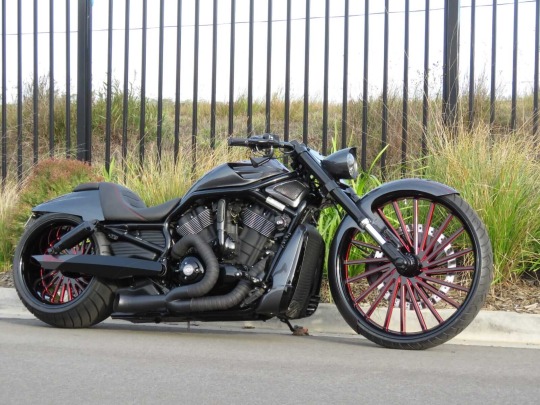
now what do you get when you cross the most reliable, unkillable dual sport of all time with a diesel engine? you get the Kawasaki KLR-650 HDT, the M1030-M1, a finicky monster used by the US military. perfect for the unkillable Miss Militia, a connoisseur of finicky military equipment. it can go anywhere and use anything for fuel, but it was literally designed to run on jet fuel.

Velocity’s a speedster right? so obviously he’s gonna get an ultra fast liter bike, super sport, 200hp, etc. WRONG. you fucking idiot. you fucking moron. personally i don’t subscribe to grimdumb f(c?)anon that he perceives real time when he’s speeding. that’s stupid cape design imo. he can go fast as his heart desires with his power. yknow what he can’t do with his power? rip up the fucking motorcross track, doing flips and jumps and shit. radical, man. so he gets a two-stoke ripper, the Yamaha YZ-250.

Battery, on the other hand, is a girlboss who needs to get stress relief via a supersport liter bike. she’s dealing with assault all day, can you blame her? so she’s getting the Honda CBR1000RR-Fireblade. liquid cooled, 999cc, inline four, with a top speed of 190mph it really doesn’t get much faster than this, folks.

now if you take the dual sport Kawasaki, give it the suspension of the Yamaha motorcross, but the tires and street performance of the supersport, you get the Supermotard class of bikes. the crackhead hooligans of the bike community, these are the bikes that are doing wheelies in residential areas, jumping over that grassy hill near your office building, and squealing around corners as the back end slips out. can you tell i have a favorite type of bike. now, who’s our resident crackhead of the protectorate? why, Assault, of course! So he’s getting the king of supermotos (and the bike i will probably be purchasing in may), a Suzuki DRZ-400SM

loud, annoying, and entitled Triumph gets the Harley Davidson Softtail, the bike of choice for obnoxious wannabe hell’s angels, the bike of choice for your balding 50yr old dad, or for the kid who wants so badly to be relevant and accepted amongst the boomers he calls friends. idk where Triumph fits into this its kinda just a vibe yk he’s a nepo baby, he gets a harley

and finally. the perfect bike for those with mobility issues/those concerned about safety due to preexisting medical conditions, Director Piggot gets a Harley Davidson Trike and she fucking slays on it, understand? girl power.
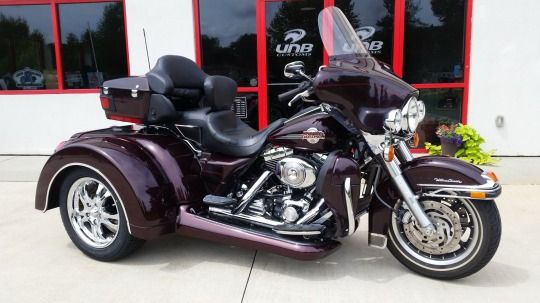
i forgot dauntless because he’s boring so he gets a boring adventure bike for boring losers. BMW F650GS. fuck you dauntless you dont even get a fun big BMW you get the heavy underpowered one. go to hell 🖕

#wormblr#parahumans#shitpost#kinda?#brockton bay#prt ene#motorcycle analysis#wildbow#worm web serial#colin armsmaster#miss militia#velocity#triumph#director piggot#emily piggot#assault and battery
64 notes
·
View notes
Video
youtube
"Speed Demon!"/"More Flakka!”
The Turbopanzer’s blistering top speed was its primary advantage. Originally intended for a 200hp 8-cylinder V-engine from the KW-AN, the treaty with Sopwith resulted in the transfer of a number of powerful 12-cylinder engines, the machine’s top speed leapt to a staggering 48km/h. However, the machine did have many stark disadvantages, limited firepower, unreliable starter, sluggish clutch-steering, and rough ride. The breakdown of order at the start of the war against Gotha left many of them at the starting line.
The original Fokker tank plan called for mobile anti-aircraft guns to accompany the vehicles forward as deterrent against attack planes. Despite being a variant, the Flaktraktor arrived in service first, as it used an existing engine and suspension system. The driver position was moved to the front atop the engine, and the newly freed space was given over to a hand-cranked turret mounting triple 20mm flak guns taken from Air Destroyer. In action, the quickly-nicknamed “Flaktor” actually saw little use in its intended role, and was quickly pressed into service as an infantry support gun, especially in urban combat.
26 notes
·
View notes
Note
Do you have anything to say about my baby, the Honda CR-Z?
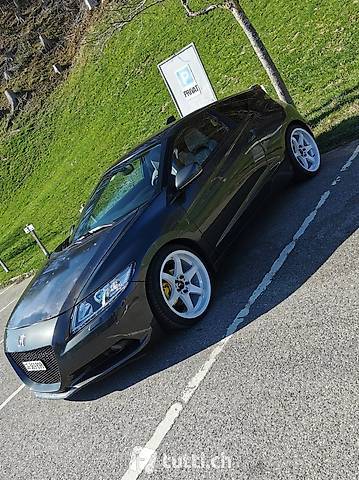
(Please excuse the low resolution, I wanted to introduce it with a pic from my collection and this was the only stock one I had)
Oh, the CR-Z... Pepperidge Farm here remembers obsessively following its debut on Top Gear Magazine! Pepperidge Farm and not many others, it seems, as in present day the CR-Z seems to be as relevant in today's car world as basket weaving. Wait, no, less.
In fact, coming up with an answer to this question was the most I thought about the CR-Z in almost a decade.
But thought I have, so here's your answer:
I don't get it.
I mean, don't get me wrong, it's not that I don't like it! I am on record as a serial Honda liker -hell, to those who think it counts I own one- and I see no reason this one should buck the trend (although I've always felt it would look better with something between the headlights to stop it looking so big-snooty, as the bumper below does a good enough job of exemplifying that I won't bother rendering something better).
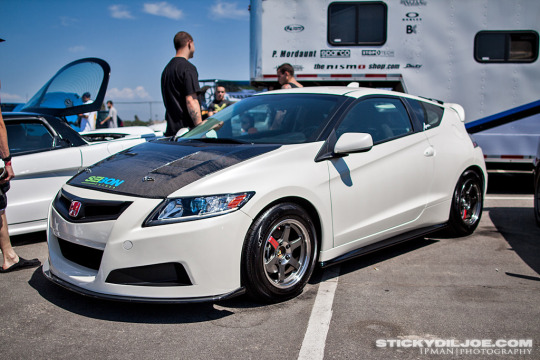
It's just that... I don't know what the point of it was. And looking at its sales that seems to be the experience of most vertebrates.

(To be fair, U.S. sales started in August 2010 and production ended in 2016 with the following years's sales just being stock clearing - but still, pretty bleak picture.)
It's not like we don't know what Honda were going for, they told us plainly: it's a sporty hybrid car, light on the wallet but heavy on the fun. And Honda would know of sporty compacts - what were they producing as the CR-Z rolled out?

Oh. It's the most hated of all six Civic Type R generations. Hm.
It's a joke, "most hated Civic Type R generation" is a bit like saying "most normal Kia Soul commercial".
If that car looks unfamiliar to you yankees, however, that's because y'all got different looking Civics for a while, such that your sporty Civic was this, the Si - seen here in the bewinged Mugen trim.

The Si is meant to sit below the Type R, but, since America wasn't getting the Type R, the yankee Si and non-yankee Type R were free to get the same 200hp from the same venerable engine (one day I'll go over all that makes the K20 so great) and the usual great handling, courtesy among plenty things of a limited slip differential. Wait, why is that not a link? Ah, right, I've never explained differentials... well, for now you can just trust that it's a cool type of differential that helps maintain grip when you're giving it the beans. Wait. Is it "giving it the beans" because you're stomping the gas pedal? Surely not. What is it from? Let me google this... Okay, sources seem scarce and shaky but apparently the idea was that if you fed horses beans they wou- wait this post is about the CR-Z. How did we get here? I swear this NEVER happens.
In short, Honda knew, and has always known, how to make proper sporty cars and give them great engines, whatever their size. So can it possibly have been a surprise when this thing came out and, forget motoring journalists, even the more talkative stray cats were meowing that the CR-Z did not have the engine grunt to back up its sporty pitch?
And look, if anyone here will say a car with as little as 120-130hp cannot be worth bothering with, it won't be a diehard of the Mazda Miata, which sold well over half a million units no more powerful than that. But that's a car that focused on open top enjoyment and getting a lot out of a little, just like the 60s European spiders it threw back to. What did the CR-Z throw back to?
Well that'll be the CR-X.
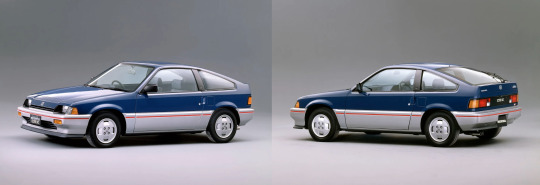

Introduced in 1983, the CR-X was a coupe version of the Civic of the time (hence its 1987 update corresponding with the Civic's). And just like the Civic in question, it is most fondly remembered for its sporty, proper-fun Si guise (pronounced "ass eye", because eye me dat ass) and the even sportier SiR that yankees never got. Which makes perfect sense, considering its main appeal against the Civic was the sportier looks.

Sure, since the CR-X left us North America got a Civic coupe in its stead, but am I going to pretend this thing looked half as good as the CR-Z that was about to join the lineup?

Not for free I'm not.
So now, imagine the stellar engine and manual transmission from a Civic Si/Type R, but now with electric assistance for even more power AND fuel efficiency, all in a car hundreds of kilos lighter, significantly shorter -thus more agile- and with the sleek CR-Z looks.
Then keep imagining.
The CR-Z never got an Si or Type R version, it was just left to sit there with its 122hp (later begrudgingly upped to 130) that, forget the contemporary sporty Civics, compared unfavorably to its 30 year old predecessor.
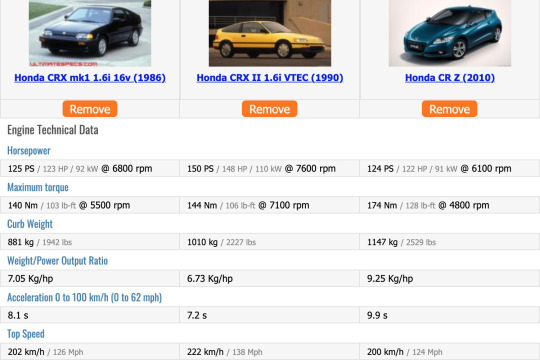
The CR-X was the sportier Civic. If its successor gets walked not just by the Civic but even by the CR-X itself, what's the point of the resurrection?
However, I concede there's an objection to this argument: this graph.

These are the US sales figures for the second generation CRX (which I think dropped the dash?), and, if you were to be able to parse it, you'd notice that the sporty Si version made up about a third of the sales - meaning most buyers forewent the sportiness in favor of the lower cost of the standard DX model or the High F-iciency of the even slower HF model. So if those versions sold well, why shouldn't the CR-Z have?
Well, if you ask me: image is more than looks.
This blog -and other affiliated entities- touched on the concept of race wins on Sunday bringing sales on Monday, and the same phenomenon happens with cool sport versions. Today's Corolla is a much cooler car in the eyes of the people who see in it the underlying foundation of its extraordinary GR version, and this phenomenon is most amplified the smaller the gap -or perceived gap, at least- between the version you're admiring and the more modest version you could realistically be interested in. I strongly believe that many people bought the dog slow CRX HF because the CRX Si ingrained within them the idea that they were buying something cool.
And Honda, as we touched on, had the perfect engine to dump into the CR-Z to make a wicked sport version. Hell, they could even have just given its regular engine forced induction - and we know it because the CR-Z Mugen RZ did just that!

Here at last was a perfectly respectable sport version that, while still underneath the Civic's best power-wise, was more than good enough to make car enthusiasts give a damn about the CR-Z. And what did Honda do with it? They limited the production to 300 units and only sold them in Japan. Take a fucking drink.
I cannot fathom why they would do that. It's not that they couldn't homologate the power additions or whatever, because a. that doesn't justify the limited production run and b. the supercharger (or at least a supercharger, not sure if it's the same) was made available in the US in the form of a dealer-fitted optional extra. Not by selling a supercharged special version altogether, no no, that may cause the public to -gasp- notice and care.
What was the point? Were they deliberately trying to keep the CR-Z's image one of an efficiency-focused... sleek hatch-coupe with minimal backseats?

Wait what?
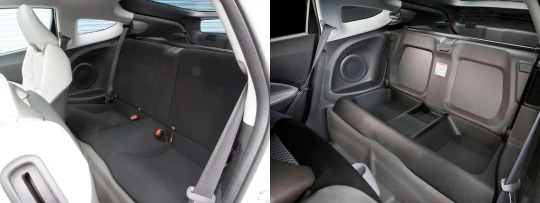
Dear God, yankees, what have you done to Honda to get done so comically dirty?
Is it just that they thought y'all too big to fit back there?
That makes it even crazier!
Why in tarnation would they think people would care about a sleek, three-door, two seat, manual... efficiency-oriented hybrid?
Oh, right. Because they made the first generation Honda Insight. Which I myself love.

This was even sleeker and more hardcore than the CR-X: it was as light as the lightest ones despite the electric powertrain, it did without backseats entirely, it was the most aerodynamic production car that had ever been built... but all this wasn't about performance at all. It was about milking every drop of your hard-earned fuel for every single fucking inch of forward movement it was worth.
And it sold very well! I mean, look at the yearly sales figures!

Look how much America loved it! In a year of production that started from December it sold around a third the units the CRX sold in a full year!
So imagine what the production numbers were like for the year 2000!

huh?
Oh you mean these are the total sales. Like, all the first generation Insights ever sold in its entire six years and change of production. Oh. And it totals to like 17.000. Which is around how many CRX Si they sold in a year in North America alone. Hm.
Yeah, it suddenly makes a lot more sense how the second generation Insight was a Prius wannabe.

In fact, now that I look at it... that back looks familiar, doesn't it?
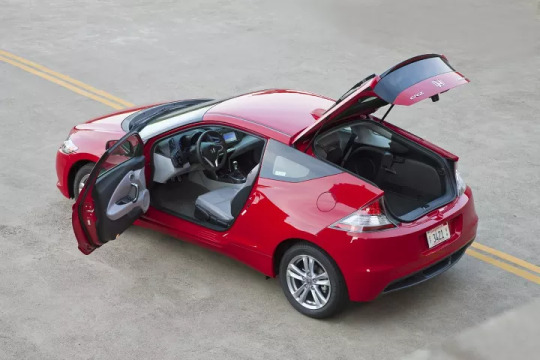
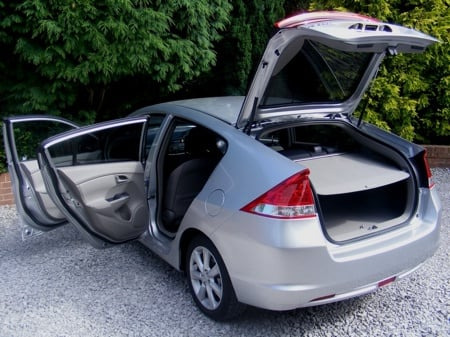
Wait...


Wait!


Well, now suddenly the car makes a lot more sense. And actually, come think of it, let me check the sales figures for the Mk2 Insight...

Considering, again, the CR-Z's US debut happened in August 2010, they match up pretty well, and it would be a pretty reasonable sales split if we were to consider them the 5 and 3 door versions of the same car.
Now, this may make it seem like it wasn't such a failure after all, and it did well in the segment it was actually intended to compete in. But let's give some context on how good those Insight sales figures are.

Yeah. Yeah no. The second Insight just wasn't a hit either.
But at least, now I can say I get the car. The Insight was pretty big and... uncool, so the CR-Z was a good way to offer that same hybrid efficiency to people who wanted a more compact, sleeker package - though perhaps not as extreme as the first gen Insight. Unless you're a yankee, I assume.
The name still doesn't make sense.
I mean, it would if I could see Honda seeing CR-X as just... a body style, and its resurrection of it akin to resurrecting, say, the Civic Shuttle.

(It was the only side picture I had saved.)
And Honda's press material made another point to this end, that I wasn't aware of.

So sure. Point taken. The CR-X was shaped by the quest for efficiency, so it follows that its successor would be efficiency focused as well.
But that's not how the CR-X is remembered. In everyone's minds, the CR-X is cemented as the sporty version (that Honda sold, mind - this is not like with the Supra, whose reputation was defined by modders). And the weirdest thing is, they don't just know that, they bring it up.

And indeed, they call the CR-Z's role "quite different from the original Insight coupe's" - they want this car to "change the current perception of hybrids" by blending hybrid efficiency and sportiness. They rightly sell its looks as sporty, take great pride in the manual transmission and explicitly state it's for driver engagement, over and over talk about 'enthusiastic' owners and 'enthusiastic' driving and 'enthusiastic' engine note etc etc. They brag about how much of a difference their Sport mode makes. They call attention to the valves per cylinder. They constantly remind of how (unlike the Insight) it has the legendary V-TEC. (If this is the first you hear of it, ask about it in the tags).
This is the press release for a sports hatch.
But when time came to give it a sports hatch's power? Japan got 300 units, North America got a dealer-fitted kit with a numbered plaque two years before the car's nixing, and we had to hope to never have a flat tire because Europe didn't get jack.
Was it to avoid stepping on the toes of the sporty Civics, because if the sporty CR-Z's potential buyers will otherwise just get a sporty Civic then why make two models to get the same amount of buyers? If so, I'll tell you why: because that was the only chance of moving regular CR-Zs, which surely must have been a worthwhile pursuit if you made the damn thing.
Was it the fear of a power-focused engine resulting in fuel economy so underwhelming it would undermine the model's eco premise? If so, heyo, you have electric assistance, which means you can either get more speed out of the same engine marking a win for the hotboys or get the same speed out of a more efficient package - and in both cases you're showing a hybrid powertrain bringing something to the table, which is how you actually "change the perception of hybrids" in the minds of people who consider them synonymous with boring.
I'm not saying my counters are bulletproof or that there is no argument against a hot CR-Z. I'm just saying that if there is, it's an argument against the regular CR-Z also. Because if the CR-Z was never to be something worth considering over anything that could be called sporty, then they should never have bothered to begin with - at least, if they were going to aim it so squarely at "the enthusiastic drivers".
In short,
Honda sought to make a sportscar - be it to sell the car itself or to sell a concept like "we're committed to preserving driving enjoyment even into electrification" or "hybrids are cool, so buy a hybrid, and please don't whine if we ever need to make a hybrid Type R or whatever thanks". And I'm always down for Honda building a sportscar. It was Honda that wasn't, for whatever reason. And so there the CR-Z stood, waiting until its passing for a sportier engine that would show the world how cool it was. But it never came. And it bugs me. Because I find it a shame. Because I remember reading of the Mugen prototype and waiting with bated breath for the production version that we ultimately never got. Because I still would love to see them about more than I do. Because I wish the second generation that apparently was in the works got to see the light of day.
Because, even after all these days of thinking about Honda's strategy and learning all we went over, and perhaps because of it,
I still don't get it.
Links in blue are posts of mine about the topic in question: if you liked this post, you might like those - or the blog’s Discord server, linked in the pinned post!
#because yes the things i act surprised by i genuinely found out / recalled as i was looking stuff up for this post#i'll now watch a couple of reviews i saved myself for after writing this to avoid parroting someone else's thoughts#so i will update this if i get some other insight#or rather some other cr-z hahahahahahaha#ok i'll go to sleep#honda cr-z#honda civic#honda civic type r#honda civic si#honda cr-x#honda crx#honda insight
22 notes
·
View notes
Text


INSIGHT
In the 80s, Group B had a vast collection of automotive beasts from different car manufacturing companies. One of these companies included Peugeot, where their 205 T16 simply rocketed through tracks. This Peugeot in particular, model 205 T16, absolutely dominated rallies within the golden age that was Group B. The 205 T16 technically was the most successful car in Group B with its 16 victories out of 26 starts and lastly 2 world championships to its name.
NOTABLE DRIVERS

1. Juha Kankkunen 🇫🇮 2. Ari Vatanen 🇫🇮 3. Timo Salonen 🇫🇮 ENGINE SPECS
Cylinders: L4 Displacement: 1775cm^3 Power: 200HP [at precisely 6750RPM] Fuel System: Turbocharged Multipoint Injection Fuel: Petrol
PERFORMANCE SPECS
Top Speed: 130mph [209km/h] 0-60mph: 6s
TRANSMISSION SPECS
Drive Type: AWD Gearbox: 5-speed manual
#wrc#group b#world rally championship#peugeot#timo salonen#ari vatanen#juha kankkunen#this was just an excuse for me to infodump and be a nerd because i love automotive engineering and specs
17 notes
·
View notes
Note
Here's a question i love asking car guys: If you had to own either a Chrysler PT Cruiser or a FIAT Multipla as the only vehicle you could own for the rest of your life which one would you choose? Suicide is not an option.
PT Cruiser GTs got basically the same engine as Neon SRT4s (the Turbo 2.4 that made north of 200hp).
Sadly Multiplas didnt get the 5 pot Fiat engine but they're also really good cars, much better than PT Cruisers by all account, especially space wise and much more reliable.
I think I'd go Multipla cause if I drive ugly it might as well be practical.
4 notes
·
View notes
Text



Nissan Pulsar VZ-R N1 Ver.II
The joy of only 300 units
The roar of 200hp returns!
TEXT/Takehira Motonobu
Photo by Yoshiyuki Okusumi
The signal of revival rises!
Do you remember the debut of the Pulsar VZ-R with a super hot engine, the VZ-R NI? We reported on the circuit impressions in this magazine, and we were all excited by the powerful engine. Unfortunately, the sale was limited to a total of 200 units, including the model that competed in the N-Race. But just when you were reminiscing and wondering, "What happened to that amazing Pulsar?", the even more evolved VZ-R N1-Version II has been debuted. This is exciting, isn't it?
Now,
How is the second edition going?
Has it changed?
From what I remember from my test drive a year ago, the engine was great, but the chassis was not well-tuned and the suspension had the hardness you'd expect from a hot model.
The production is also not that great.
However, Version II has been significantly improved with more emphasis on the chassis and sports equipment. It is a full-fledged sports model that lets you enjoy the 200ps to the fullest.
The engine is untouched this time. Hmm? Not convinced? Look at the specs again.
200ps/7800 rpm, 18.5kgm/7600rpm. NA 1.6L. This is amazing.
One word: Of course, it has the best specs in its class. That's why there's no need to do anything more.
It is not easy to achieve such high power. The base model is the SR16VE.
Generates 175ps/16.5kgm. However, the only thing the NII specification shares is the cylinder block.
The intake and exhaust systems and cylinder head are new designs, and every last detail has been meticulously worked on. Naturally, many parts are done by hand, which is also the reason why it cannot be mass-produced. Incidentally, the chassis springs and dampers have been significantly strengthened, the diameter of the front and rear stabilizers has been increased, the front of the car has been lowered, and the tires have been increased in size from the previous NI's 195/55R15 to 205/50VR15. Other changes include the fitment of a special strut tower bar and the adoption of lightweight aluminum wheels that have been increased in size from 6.0" to 6.5J. The body has also been lightened slightly.
But still, this engine is amazing. For a while after starting to drive, I forgot about the improved chassis and was immersed in the engine.
I thoroughly enjoyed it.
The more you rev it, the more the power grows, which is truly stimulating. The highlight is from just over 7000 rpm, where the secondary fuel injector kicks in, to the top end. The engine roars even more loudly, and the acceleration G-forces increase even more. The 8000 rpm redline is just for show. Rev limiter
When you rev it up, it will exceed 8500 RPM. The power, feel, and sound are all things you would expect from a top-class sports engine. At the same time, the drivability is also OK, so there's nothing to complain about.
If you pay attention to the feet,
Compared to the previous NI model, it showed a clear performance improvement. The roll rigidity is significantly higher (smaller roll), no dive, and little squat. In other words, the body movement is less, and the handling is sharper.
That's why it happened.
At the same time, cornering grip has also improved. This is due to the larger tires and the tire characteristics
The suspension is designed to bring out the best in the engine performance.
On the other hand
So, the suspension is really good.
It doesn't feel too stiff. The seats are quite firm, but they have a fairly mild feel to them. I felt that I wouldn't feel uncomfortable even when driving on public roads.
I was also impressed by the high stability, which showed no signs of instability even when I pushed the circuit with all my might. There was no sign of the tail sliding out at all. This was due to the high performance of the Pulsar's rear multi-link beam suspension.
Driving has improved significantly
The lap times were also much faster. It can be said that the car now has a suspension that is worthy of a full-fledged sports model. The atmosphere inside the car has also been completely transformed.
The steering wheel is wrapped in genuine Momo leather
Not only has the seats become a special mono-form bucket type with the same shape as the R33 GT-R, but the seats and door trim are made of a special orange fabric to create a special mood. The cockpit has been transformed into one that really gets you in the mood.
Because it is a circuit test drive,
We had some requests, such as more traction, a lack of stopping power, and a lack of steering rigidity, but when we drove it on the winding roads of Hakone, it was a thrill.
However, this version II will also be discontinued after a limited production run of 300 units, including the N1-race model. So, what should we do?
PIC CAPTIONS
The large rear spoiler shows off the car's performance. The muffler is made by Fujitsubo.
Adopts GT-R bucket seats!
The bucket seats are decorated with striking orange cloth. I thought I'd seen them somewhere before, and it turns out they're the same seats used in the GT-R! Not only are they effective, they also put you in the right mood.
Equipped with Momo genuine leather steering wheel.
The door trim cloth is also exclusive to the NI Version II.
#pulsar VZR N1#nissan pulsar#nissan pulsar VZR#pulsar VZR N1 Version ii#pulsar VZ-R N1#nissan pulsar VZ-R
7 notes
·
View notes
Text
2006 INTERNATIONAL VT275 ENGINE 200HP
#chevrolet#cars#bmw#audi#auto parts supplier#auto parts online#trucks#united states#canada#auto parts and accessories#autos#auto repair#vehicle#oemparts#usedcarparts#used cars#usedcarbuyers#usedcardealers#truck#trucking logistics#truck accessories#truckinglife
2 notes
·
View notes
Text
1985 Oldsmobile FE3-X Hurst Olds Cutlass Concept, AKA Darth Vader.
Oldsmobile took a G-body based 442 and made it into the famed FE3X , aka Darth Vader. This car had special ground effects, a 200hp 307ci V8, a 5-speed manual transmission, Recaro seating, and modified suspension.
The Oldsmobile FE3-X concept car program was headed up by GM Engineering and Bill Porterfield.

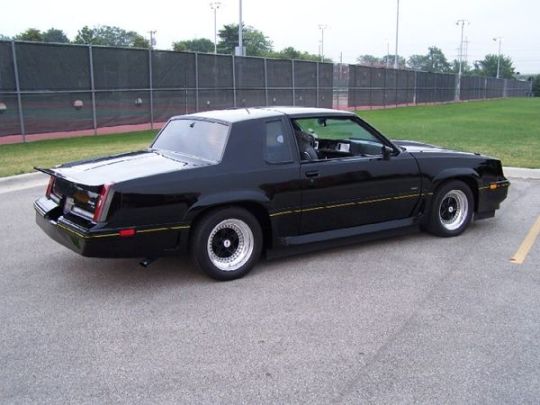
31 notes
·
View notes
Text




Rambler American 440 Rogue Hardtop Coupe, 1966. The compact AMC Rambler model line had been marketed as an economy car but by the mid 1960s the market was more interested in performance. The Rogue pivoted the Rambler brand away from economy and towards power. A completely new 290ci "Typhoon" V8 was developed by AMC and inserted into a special mid-1966 Rogue model. It was offered in a 200hp 2-barrel version or as a 225hp high compression V8 with a 4-barrel carburettor. The Typhoon V8 engine remained in production for the Jeep Grand Wagoneer, after Chrysler had acquired AMC, until 1991.
#AMC#Rambler#Rambler American#Rambler American 440 Rogue Hardtop Coupe#1966#muscle car#pillarless hardtop#hardtop coupe#dead brands#V8#Typhoon V8#Rogue
193 notes
·
View notes
Text







1975 BMW 3.0CSi: 3.0-liter, six-cylinder, Bosch D-Jetronic fuel injected M30 engine with 200hp (149 kW) @ 6,000 rpm - 271 Nm / 200 ft. lbs. of torque @ 3,700 rpm - 0 to 60 mph (96.5 km/h) in 7.5 seconds with a top speed of 139 mph (224 km/h) - 12,024 units were produced from 1971 to 1975. More info can be found in the following link https://classic-vintage-bmw.tumblr.com/3.0cs/i
9 notes
·
View notes
Note
Hi Al, I’ve seen people reacting both positively and negatively to the F1A and FRECA agreement, with some people saying that FRECA isn’t really a step forward from F1A. Is this true? And would it be better or worse if this agreement was with F3 instead of FRECA? I’m not really educated on the feeder series like this but I’d like to know
FRECA is kind of like F3.5 it’s basically a stepping stone between F4 and F3, I would say that F1A to F3 would be quite a substantial jump
Most drivers nowadays don’t do F4 straight to FIA F3, a lot of them do FRECA or another regional F3 series
The FRECA engines have a horsepower of 270, the F1A ones are 170HP, and F4 160HP and F3 is around 380HP. So you can see a jump of 200HP is significant. I think if they want them to succeed taking a reasonable sized jump is better than pushing too far. If FRECA goes well then F3 would be the next step
The current F1A drivers, some of them. do have previous F4 or even F3 experience so it might seem weird for progression into FRECA, but looking for the future FRECA should be the next level that F1A are pushing their drivers towards as they are meant to be the first step out of karts.
21 notes
·
View notes
Text

An unfinished concept I made for a tf2 class oc known as the Tank!
I drew this up about a year ago and forgot to pick it up again, but I wanted to share it with somebody— I also wrote down a bunch of gameplay ideas, but keep in mind i’m an amateur with no game design or balance experience :p
The Tank
Shotgun
SMG
Bayonet
Shield-200 HP
melee and explosives does full damage to shield, projectiles do reduced damage
can use SMG and Bayonet with shield out
When stowed on the Tank’s back, the shield can take two backstabs before it is destroyed.
shield can be deployed to provide cover for teammates or herself, placement is similar to engineer buildings.
when the shield is in use, the tank’s speed is reduced, when on back she moves a bit quicker, and when deployed she moves at full speed.
Engineers can repair the shield with metal.
There is a hole in the shield for visibility, a good shot can get through. This also allows for friendly snipers to shoot from cover when deployed.
Bayonet has good reach
Bayonet kill taunt
can earn points based on damage blocked
The Tank herself has 200hp
The Tank’s bayonet will do increased damage to shields and other buildings.
AUTHOR’S NOTE: she’s a butch lesbian :]
3 notes
·
View notes
Photo

D&RGW train (Narrow Gauge), engine number 50, engine type Davenport Diesel 200hp Switching operation; 3 cars. Photographed: Durango, Colo., 1960s.
20 notes
·
View notes